William Wegman “Instant Miami”
William Wegman: Instant Miami
September 4—December 8
October 11, 4:10, artist talk by William Wegman, Gendebien Room, Skillman Library,.followed by book signing and reception at the Williams Center Gallery.
October 29, 4:10, “On location with the 20×24 Polaroid Camera,” a conversation between William Wegman and John Reuter about using the refrigerator-sized camera, Williams Center 108. Reuter, director of the 20×24 Studio, worked with Wegman on nearly all of his Polaroid projects for three decades,
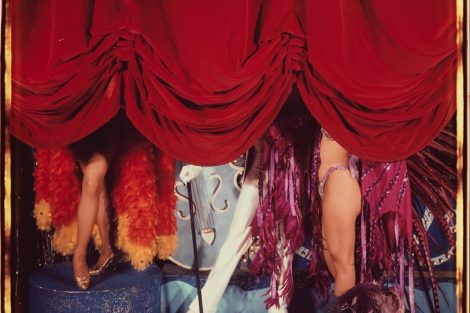

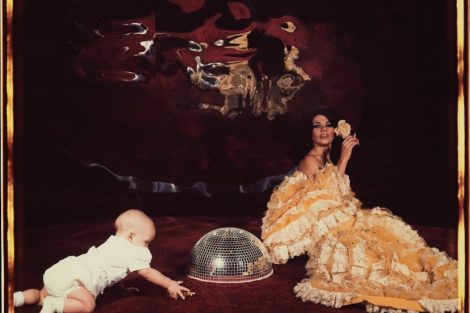
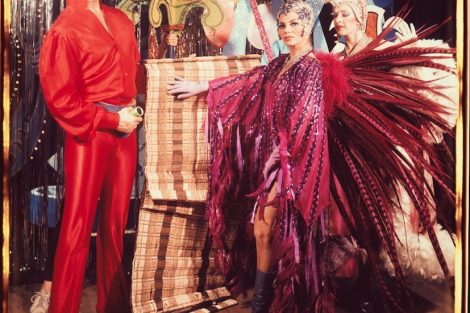
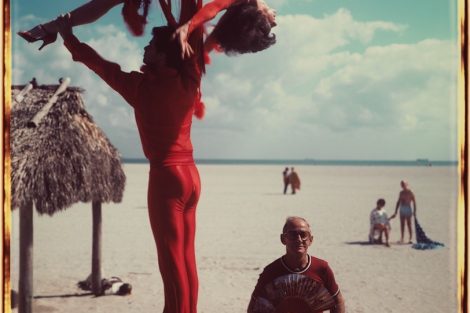
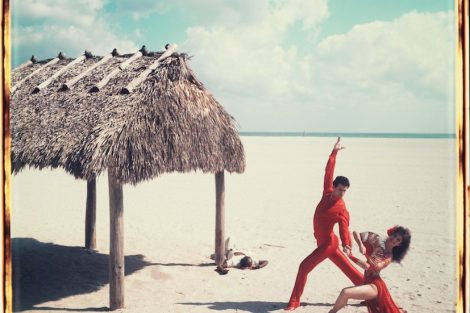
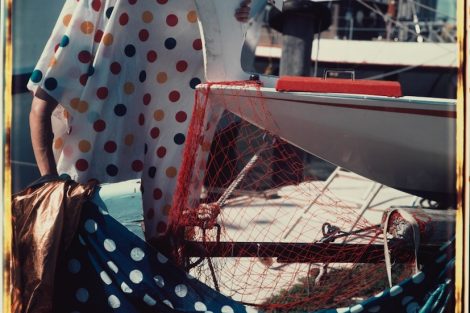

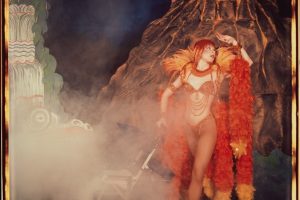
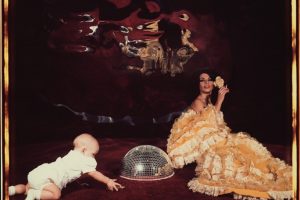
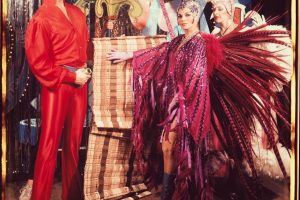
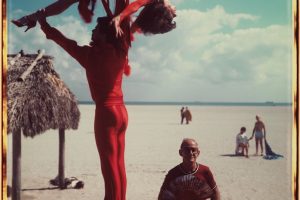
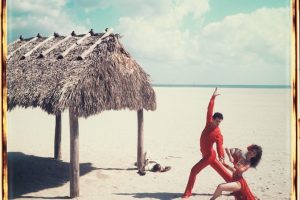
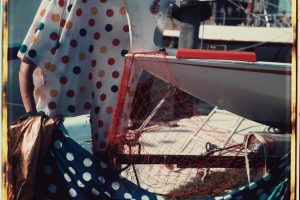
William Wegman was invited by the University of Miami’s Lowe Art Museum to visit Miami in 1984 and take in the city through the eyes of an artist, with an agreement to show the resulting work at the Lowe later that year. He spent a week, primarily in three locations: South Beach, Grove Isle, and Les Violins, the Cuban cabaret-style lounge in Little Havana.
Many know William Wegman’s widely celebrated, iconic Polaroid images of his Weimaraners. When Wegman made the Instant Miami images, he was, in his words, “between dogs.” Man Ray, his video and photography muse, had died two years earlier. (He returned to photographing dogs with Fay Ray and her offspring several years later.) As such, making Instant Miami, says Wegman, “was really a good thing for me, I think it forced me, challenged me, in some ways to not use the crutch of the dog.”
When he arrived in Miami he spent several days scouting locations with Manuel E. Gonzalez, the director of the Holly Solomon Gallery in New York City who represented Wegman. Gonzalez knew both Miami and Wegman well and, suspecting a shared aesthetic, brought him to see Les Violins and to meet the people who inhabited this theatrical space. Les Violins was all the rage among Miami Cubans. A cabaret-style nightclub on Biscayne Boulevard, had transferred an element of Cubanidad from La Habana to Miami with live bands and tropical dancers—a swanky night out for a special occasion. With their enthusiastic participation, Wegman settled into photographing the Les Violins performers for most of the duration of his time in Miami. “Les Violins turned out to be great for many reasons,” says Wegman. “The cast, the sets… It was really a treasure to find that. And everyone loved working on this project. ‘We are making history!’ one of the performers said.”
He also brought the camera outdoors, onto the beach, capturing the city and its residents as abiding expressions of community and family, in which transgressive gestures such as smoking babies, kids in wigs, or public dancing become a unifying force against the opposition or indifference of the world around it.
The camera Wegman used in Florida was the 20 x 24 Polaroid camera. He found the large format camera oddly inspiring. “Lugging this obscenely large, not very cooperative camera to extreme locations—it’s formidable.” This Polaroid was described as an “instant” camera. But this was not the popular, small, hand-held, easy-to-operate Polaroid camera whose iconic white-bordered 3.3-inch by 4.3-inch photos had been imprinted upon our culture’s imagination as an “instant” photograph. The camera Wegman used in Florida was refrigerator-sized. It was one of only five made by the Polaroid Corporation and it had been specially flown from New York to Florida for this shoot. Setting up the large camera for a shoot was not quick. It required assistants to move it and set up strobe lighting and a Polaroid technician to operate its finicky mechanics.
The unique 20 x 24 inch image did develop within minutes—“instant” in an era when photographers had to process film and print in a darkroom, and allowed Wegman to react immediately to recompose a shot. The 1984 Lowe Art Museum’s press release described his work process: “Watching Wegman work was something akin to watching improvisational theater. He interacted with places, props, people. Strangers were consistently willing to get in the pictures, and the artist listened to them.”
Catalogue essayist Nestor Armando Gil—born in north Florida to Cuban immigrants, grew up visiting family in Miami as an adolescent in the early-mid 1980s. He writes that the Instant Miami photographs “possess a richness and immediacy, framing and sense of light and color—the formal details of making a great photograph—long associated with this artist. They also provide evidence of his wit, establishing contexts for the wry and ridiculous constructions of people, objects, materials, and space with which Wegman populates them. They make me laugh and remember, and they make me laugh at my remembering. And while they make me laugh and I find them indeed quite funny, I would not call them funny pictures, I would not describe them as comical.”
The illustrated catalogue with essay by Gil, Associate Professor of Art at Lafayette College and co-curator of the exhibition will be published. Text of the essay is available here.
A selection of Instant Miami photographs was exhibited at the Lowe Art Museum in late 1984 and early 1985. The Lafayette exhibition is the first time these photographs have been shown in more than 30 years.
###
The Williams Center Gallery and Skillman Library will co-present works by William Wegman during the fall. A companion exhibition at Skillman, William Wegman Photographs, will showcase a series of black-and-white 20 x 24 Polaroids, a selection of recent work with modernist furniture, and the limited edition artist’s book Field Guide to North America and to Other Regions.
About the artist:
William Wegman is a world-renowned and pioneering multi-media artist. A key figure in the West Coast Conceptual art movement, Wegman has been recognized internationally for his videos, photographs, paintings and drawings. A major and long-lasting body of his work has centered on photographs of his Weimaraners—Man Ray, Fay Ray, their descendants and relatives.
Wegman was born December 2, 1943 in Holyoke, Massachusetts. He received a BFA in painting from the Massachusetts College of Art in Boston in 1965 and an MFA from the University of Illinois Champagne-Urbana in 1967. Wegman’s photographs, videotapes, paintings, and drawings have been exhibited in museums and galleries internationally
Retrospectives of Wegman’s work have toured museums in Europe, Asia and the United States including: Wegman’s World, Walker Art Center, Minneapolis (1981); William Wegman: Paintings, Drawings, Photographs, Videotapes, Kunstmuseum, Lucerne, Switzerland (1990); Funney/Strange, Brooklyn Museum of Art (2006), Wexner Center for the Arts, Ohio State University, Columbus, Ohio (2007); and Hello Nature, Bowdoin College Museum of Art, Brunswick, Maine (2012), travelling to Artipelag, Stockholm, Sweden; and Before/On/After: William Wegman and California Conceptualism, Metropolitan Museum of Art, New York, New York ( 2018). Recent gallery exhibitions include William Wegman: New and Used Furniture, Marc Selwyn Fine Art, Los Angeles (2016); Good Dogs on Nice Furniture, Texas Gallery, Houston (2015); William Wegman: Postcard Paintings, Sperone Westwater Gallery, New York, New York (2016); Dressed and Undressed, Sperone Westwater, (2017).
Please Stand By: Drawings for a Better Tomorrow and a Worse Yesterday, Grossman Gallery, Lafayette College (2017), presented Wegman’s videos from the 70s and a selection of works on paper—drawings, collages, and altered photographs from the 1970s through the 1990s—revealed the humor and strange logic which inform so much of his work.
Being Human, a large scale survey of over thirty years of Wegman’s photographic work was published in fall 2017 (Chronicle/Thames and Hudson). A travelling exhibition inspired by the book was organized by the Foundation for the Exhibition of Photography and opened at Rencontres d’Arles, Arles, France (2018), the start of a four year tour that will include stops in Australia, New Zealand, Asia and Europe. Copies of Being Human will be available at the book signing on October 11.
Wegman has published a series of children’s books inspired by his dogs’ various acting abilities: Cinderella, Little Red Riding Hood, ABC, Mother Goose, Farm Days, My Town, Surprise Party and Chip Wants a Dog. He has published books for adults including Man’s Best Friend, Fashion Photographs, William Wegman 20 x 24, The New York Times bestseller Puppies, Fay, William Wegman: Paintings, and Being Human, edited by William Ewing and published by Chronicle/Thames and Hudson (2017).
He has created film and video works for Saturday Night Live and Nickelodeon and his video segments for Sesame Street have appeared regularly since 1989. The Hardly Boys was screened at the Sundance Film Festival (1995). He has been commissioned to create images for a wide range of projects including a fashion campaign for Acne, banners for the Metropolitan Opera and covers for numerous publications including The New Yorker and, most recently, Wallpaper. Wegman has appeared on The Tonight Show with Johnny Carson and with Jay Leno, The David Letterman Show and The Colbert Report.
William Wegman lives in New York and Maine where he continues to paint, draw, make videos and take photographs with his dogs Flo and Topper
Header image: William Wegman setting up a shot for his “Instant Miami” series, with a 20×24 Polaroid camera, 1984. Photo by John Reuter